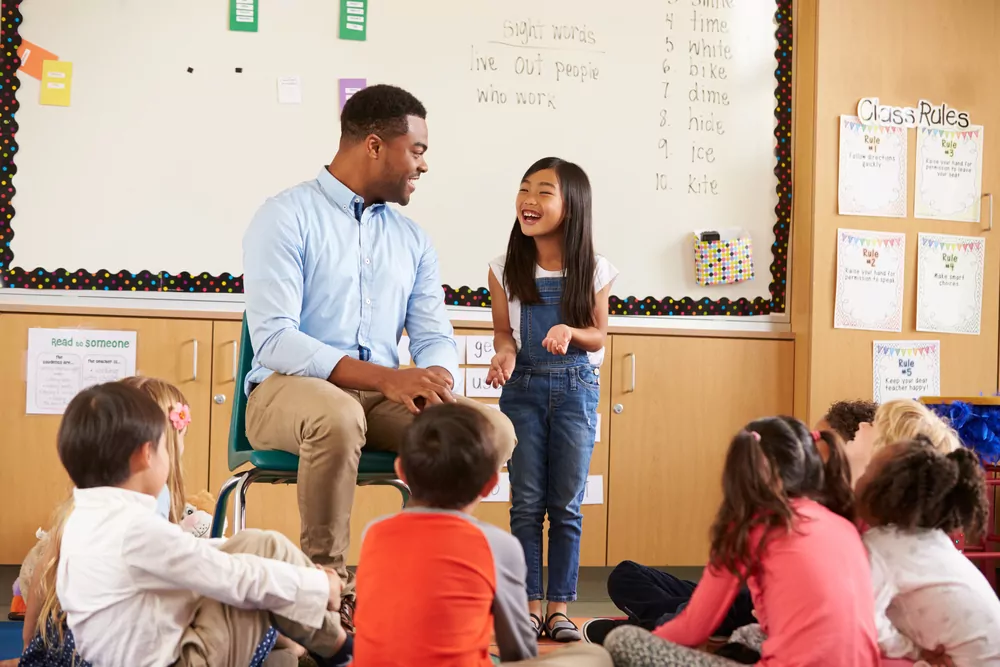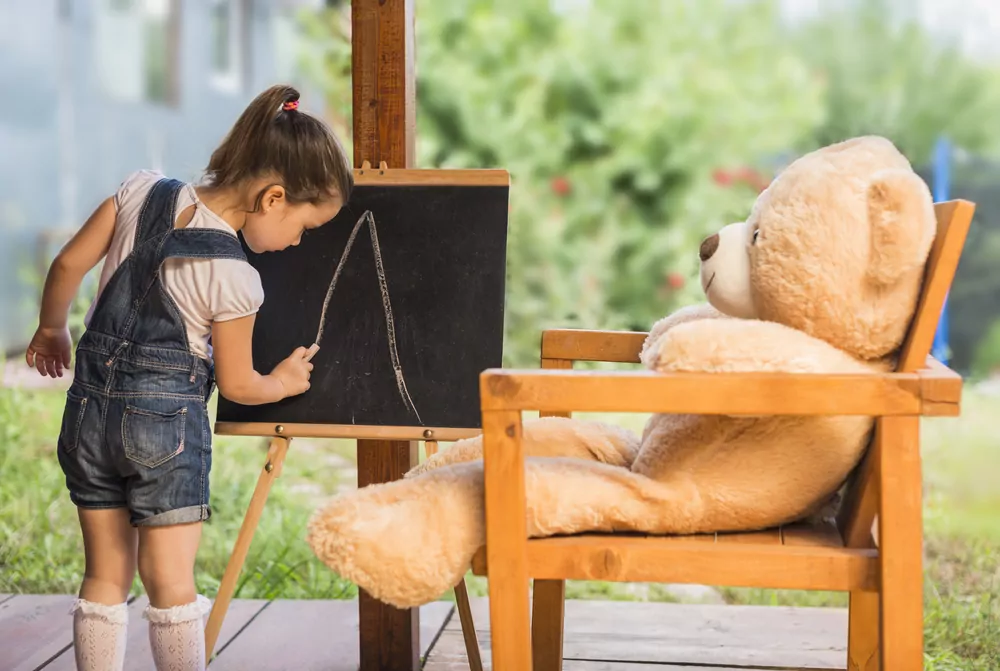Speech and Language Goals for Autistic Kids
Oct 11, 2024 There are several key developmental areas that speech therapists should be targeting when working with children who are on the autism spectrum.
When I’m at my private speech therapy practice, parents who have a child with autism always bring in their child’s IEP and have me look at the goals and objectives. This usually occurs when their child stops making progress and they are concerned that goals are unattainable or inappropriate for the needs of their kid.
IEP goals for autism
The goals can be broken down into categories:
- Joint attention
- Social reciprocity (give and take during conversational tasks)
- Language and related cognitive skills
- Behavioral and emotional regulation
Speech Blubs is helping kids on the spectrum! Check out Ash’s story, who started imitating animal sounds with the help of the Speech Blubs app.
After your IEP meeting, your report should list each goal with a measurable component to it. This means, that at the end of a marking period, trimester, or year, the child should be meeting certain characteristics of that goal.
For example, if the goal is to have your child sit during story time, a short-term goal might be that for 5 minutes of story time three times a week your child will sit and pay attention with moderate verbal or tactile (touch) cues. The long-term goal might be to have your child sit for 20 minutes of story time five times a week with minimal cues.
IEP Speech and Language Goals
These goals should also be broken up depending on age. A one-year-old is not going to be able to sit for 20 minutes of story time with minimal cues by the end of the school year.
However, a three-year-old should be able to do that goal successfully. Of course, other disabilities or cognitive issues will play a role in how fast your child meets any educational goal that is placed in his/her IEP.
1. Joint Attention
Joint attention is the shared focus of two or more individuals on an object, action, or event. It involves the ability to coordinate attention between oneself, another person, and an object or event in the environment. For example, when a child points to a toy and looks to their parent to share interest, or when two people look at each other while discussing a topic, they engage in joint attention. It is an important skill for social interaction, language development, and learning.

Your child’s IEP can include some or all of these goals:
- Responding to a caregiver’s voice.
- Shifting gaze between people and objects.
- Recognizing and describing emotional states of self and others.
- Commenting to share enjoyment and interests.
- Understanding what others are indicating with gaze and gestures.
- Using emotions of others to guide behavior in social interactions (e.g., selecting topics based on another’s preferences, praising others, sharing empathy).
2. Social Reciprocity
This is another way to say the give and take in a social interaction. We know how to respond to other people’s interests and responses. Children who are on the spectrum do not have that instinctual notion.

Here are some examples of goals that could be included in the social reciprocity section of an IEP:
- Maintaining interactions by taking turns.
- Initiating bids for interaction.
- Recognizing and attempting to repair breakdowns in communication.
- Engaging in topic maintenance (e.g., providing expansion comments).
- Initiating and maintaining conversations that are sensitive to the social context and the interests of others.
- Maintaining conversational exchanges with a balance between comments and requests for information.
3. Language and Related Cognitive Goals
Language and cognition goals are anything that has to do with the understanding and use of the child’s native language. This can also include nonverbal communication, such as gesturing.

Here are some examples of language and cognitive goals:
- Using a range of gestures to share intentions (e.g., giving, showing, waving, pointing),
- Pairing vocalizations with gestures to share intentions,
- Turning pages and pointing to pictures in books,
- Understanding and using more creative combinations of words,
- Understanding sequence of events in stories, attending to beginning and rhyming sounds, and naming alphabet letters,
- Enacting social sequences in a representational manner by incorporating themes or modifications introduced by others (e.g., role-playing and visualizing an event before it takes place),
- Demonstrating story grammar knowledge, decoding, and letter–sound correspondence and expanding literacy skills (e.g., reading comprehension and written expression),
- Problem-solving, self-monitoring, goal-directed behavior (i.e., executive functioning).
4. Behavioral and Emotional Regulation
This is one of the hardest areas for children who are on the spectrum to master because it’s the core of their diagnosis. This area relates to your child’s ability to understand his/her emotions, process them, communicate what they are feeling, and learn how to cope with the emotions they are experiencing.

Sample behavioral and emotional goals can include:
- Protesting undesired activities,
- Requesting a soothing activity when distressed,
- Expressing one’s emotional state and the emotional state of others,
- Using language to talk through transitions across activities,
- Perceiving one’s actions within social events and predicting social behavior in others in order to self-monitor,
- Negotiating and collaborating within interactions with peers.
Again, these are examples of goals that can be implemented in your child’s IEP. Make sure they are using goals that relate to your child’s areas of weaknesses and are attainable within a school term. Most of the goals that are suggested for this disorder need to be addressed in the home setting, as well. The more exposure they have to practice the goal, the quicker they will reach it.
Functional communication goals for autism
Functional communication is the way to break down barriers to a child’s independence. This means communicating wants and needs and when socializing with others. There are at least 50 functional communication goals to work on for kids of all ages and abilities, so make it a part of your daily conversation so that it doesn’t seem like lecturing or teaching. The IEP goals for autism in preschool should be specifically for your child and appropriately attainable.
Try and be as patient as possible and ask your therapist for a list of activities that you can address and target in the home environment. Finally, don’t shy away from activities in the community. This will be an integral part of your child addressing and sort of social deficit!
